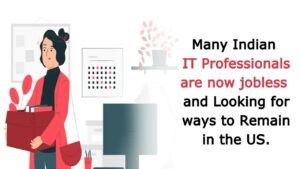Age based differentiation is regarded as quite widespread, yet not widely recognized and accepted forms of intolerance within society. While the idea of intolerance has historically been controversial in professional settings however, it has only increased during the current pandemic.
Table of Contents
Challenges:
COVID-19 pandemic has led to increasing prevalence of remote work , to the rise of contingent work use One of the least reported aspects of the virus was its effect on older generations of the working population and on the age oriented bias prevalent already. Covid has caused a dramatic and unexpected change in the older professionals in the workforce who are being disadvantaged from the beginning.
Digital Exposure deficit
In the early days of COVID-19, our workplaces were transformed to an isolated environment in a matter of minutes. The necessity for rapid adoption of technology in a defunct workplace caused huge difficulties for many employees.
Some people mistakenly believe that due to the fact that older generations have less understanding of digital technology and technology, they’re behind the curve in technology. Instead of spreading these false notions, businesses should work to stop these myths from being accepted as fact.
Risk of greater exposure to COVID-19
It’s been documented well and scientifically proved that COVID-19 affects older people more than younger ones. According to research from the Kaiser Family Foundation, 80 percent of coronavirus related deaths occur in people who are over 65 years old. To reduce the chance of older workers getting COVID-19 on the job Some companies have decided not to employ those who are older. This kind of discrimination is not allowed to be sustained.
In 2020 the U.S. Preventive Services Task Force revealed that three-quarters (75%) of Americans older than 65 are fit and healthy, without problems with hearing, vision mobility, communication or cognitive. Since these people have the ability to perform professional tasks and work, employers must create a fair and fair recruitment process that creates opportunities for the older generation.
In the end, it’s the responsibility of employers to increase the protection measures that ensure their workplace is safe for everyone.
Challenges of re-entering Job
For people over the age of 50 who were dismissed from their jobs due to COVID-19 entering the workforce has proven to be a major problem. According to the U.S. Bureau of Labor Statistics, more people who were over 65 left the workforce in 2020 than in any previous year in history.
Although some of this older generation decided to go into early retirement, many seeking employment opportunities could not locate any.
Research shows that people who are unemployed have to wait twice as long than their younger counterparts to find work, and those who are able to find jobs typically earn less than they did in their former job.
Remove the stigma of aging
If you want to reverse the trend of ageism across America, in order to reverse the trend of ageism that is sweeping across the United States, companies must invest their full time in expanding opportunities for the elderly population. Intensifying efforts to promote employment growth for employees as well as caregivers, volunteers and other workers is vital for the development of an inclusive and diverse workforce.
Summary:
Combating false stereotypes and damaging generalizations about ageism is crucial in removing these patterns of thinking that are prevalent in the business world. Our society as a whole must stop the damaging statements that highlight the achievements of our elder generation. Everyone deserves a place at the table, regardless of their age.



